Essential Die Cutting Tools for Paper Crafting
Last Updated: October 27, 2025
Die cutting machines are a staple in every crafter’s room. This all-around handy machine is not just for cutting dies; you can also use it to emboss, deboss, score, write, draw, engrave, and scan. While the machine is the “star” of the show, a few other essential die cutting tools help make this fun crafting process a breeze.
If you are on the lookout for the best die cutting machine that will fit your needs, or you simply want to learn more about various tools used in die cutting, this quick read is for you!

Mini Blossom Die Cutting Machine
What Is Die Cutting?
The easiest way to explain die-cutting to someone who hasn’t heard of it before is by comparing it to cookie-cutting. Most households probably have a cookie-cutter or two in their kitchen. At its core, die-cutting is a process through which a material is cut into customized shapes and designs using metal dies. Similarly, when you use a star-shaped cookie cutter, it will produce a cut-out in the form of a star. In the manufacturing world, a wide range of materials are used in this process, such as plastic, metal, glass, wood, fabric, etc. The die cutting machines used for industrial and commercial purposes are usually larger and more heavy-duty.
In crafting, the most common materials used for cutting dies are paper, fabric, felt, and corkboard. The machines used by crafters are smaller, portable, and usually fit on a desk. Through the use of die cutting tools, crafters can create cut-outs of the same shape or design quickly, easily, precisely, and in bulk. It’s a total time-saver, especially when creating multiple handmade projects or mass-producing die-cuts for DIY crafts. This makes it the ultimate must-have machine for card makers, scrapbookers, and DIY crafters.

How Does Die Cutting Work?
Are you curious about how the process of die-cutting works? It’s easier than it sounds! It involves a machine, a sandwich, dies, and paper! Here’s a step-by-step on how die-cutting works.
1. Prepare your machine. Please take note that, while all die cutting machines do the same job - that is, creating cut-out shapes with dies, each manufacturer’s device is different in a way. That being said, each machine will have a different way of making a “sandwich” for your dies, so keep that in mind.
PRO TIP! Keep the instruction manual that comes with your machine! Jennifer McGuire recommends laminating the pages of the manual so that you can always refer back to it when you encounter issues with your machine. Laminating it keeps it safe from getting torn, wet, dusty, etc.
Most machines come with all the die cutting tools that you’ll need to cut dies, such as:
- Die-cutting platform
- Cutting plates (Some machines use a mat or a pad)
- Shim
- Embossing mat
2. For manual machines, you need to place the platform in the machine first. Take note that some of the best die cutting machines don’t require a platform anymore.
3. Next, place one of the cutting plates on top of the platform. This will be your “rough” cutting plate, which means it will get cuts, scratches, and impressions from your dies. Take note that the sharp edge of the die will cut through the paper and into the top of the cutting plate. Think of it as the surface underneath your cookie dough. When you use the cookie-cutter and press your hand onto it, it might make an impression on your surface.
4. Place your cardstock or paper on top of the rough cutting plate.

5. Then, place your chosen die on top of the cardstock paper. Remember to put it facing down, meaning the sharp edge of the die should be facing the paper.
6. To ensure that your dies will stay in place, you may use a low tack, removable washi tape.
7. After that, place the other cutting plate - this will be your “clean” cutting plate - on top of the die. It’s like your hand pressing onto the cookie-cutter. This completes your “sandwich!”
8. Finally, place the “sandwich” into the machine and start cranking the lever. Cranking the lever will feed the platform and the sandwich (with the dies and paper between them) through the machine.
9. As it goes through the machine, the pressure of the two plates will press the thin metal die into the paper underneath it. Its sharp edge will then cut through the paper, creating the custom shape or design.
10. For more intricate dies, a shim may be needed to apply more pressure and ensure that the cut-out will be clean and precise.

Must-Have Die Cutting Tools
Now that you know “what is die cutting,” the next step is to familiarize yourself with the essential tools needed to create die-cuts. You may or may not need some of these tools, especially when you’re just starting. But it won’t hurt to get to know them and how they work. Here’s a quick overview for you!
What is a die cutting machine? It is a machine designed to cut out custom shapes and designs from various materials such as paper and fabric. Most paper crafters have one or two of these convenient little machines in their craft room. It is a handy tool that allows crafters to create unique cut-outs using their collection of thin metal dies. Most machines come with the necessary tools for die-cutting, such as cutting plates, shim (metal, plastic, or magnetic), embossing mat, and platform. You may, however, buy these tools separately or as a replacement.

Peony Spray Stamp & Die Bundle
Generally, there are two types of die cutting machines: manual and electric. Let’s discuss the features, pros, and cons of each type of machine.
|
Type of Machine |
Features |
Pros |
Cons |
|
Manual |
This is a machine that you need to crank manually using the built-in hand crank or lever. Some brands are folding; others aren’t. Some of the best die cutting machines are Spellbinders Platinum 6, Sizzix Big Shot and Big Kick, Lifestyle Crafts Evolution, Cricut Cuttlebug, and Altenew Mini Blossom. These are very compact and handy. |
It is usually small, so it’s a space-saver. It is compact. It doesn’t require electricity to function. It is portable and travel-friendly. It is beginner-friendly. Its small size means a smaller footprint. Some have suction at the bottom so that it won’t move around your desk. |
You need to have some arm strength, especially when you use the machine a lot. Prolonged use might cause pain and discomfort around the arm and shoulder area. Some brands don’t fold up and occupy more space. Some have a larger footprint. Some can only cut paper and thin fabric. Some have limited functions. |
|
Electric |
This die cutting tool does everything that the manual does but with electricity. Instead of a hand crank or lever, this machine is powered by electricity. It can be operated by pressing the buttons (there are usually 3-4 buttons). Some popular brands are the Gemini Junior and Anna Griffin’s Empress Die Cutting Machine. |
It is more convenient. It is easier to use. Some automatically grab the cutting plates and pull them through the machine. So there’s no need to push the plates in. Some have a button to help you feed the cutting plates to the machine. The plates can go straight or sideways. It’s great for bulk die-cutting. |
It needs to be plugged in. It’s not environment-friendly. Some are not portable and travel-friendly because you need electricity to run them. Some are a bit bulky. Some have a larger footprint. A bit pricier than manual ones. |
Altenew’s Mini Blossom Die-Cutting Machine is a manual die cutter that isn’t just small, portable, and space-saving, it is also very pretty to look at! Watch the video below to learn more.
Looking to invest in the best die cutting machine that will fit your budget and crafting needs? This blog post offers a quick guide to help you decide!
2. Die Cutting Plates - These plates make up the “sandwich” that you feed into your machines! This is usually clear and made out of thick, high-quality plastic (polycarbonate plastic) or clear acrylic. There are two plates - a thick plate and a thin plate. Technically, you can cut on either plate, but the thick plate is best used as a cutting surface (a.k.a. your “rough” cutting plate).

Mini Blossom Die Cutting Plates
3. Metal Shim or Metal Adapter Plate - This useful die cutting tool is an additional plate that can help with cutting more complex and intricate designs. Thin metal dies are usually sharp enough to cut through regular paper, but more pressure is needed for other materials like thick cardstock, fabric, or cork. That’s where the shim comes in handy. This tool is usually placed between the platform and the rough cutting plate. Some manufacturers have a plastic shim or magnetic shim instead of a metal one.
What is a die cutting shim? Watch the quick video below to learn more!
4. Thin Metal Dies - You can’t make a cookie without a cookie cutter! Thin metal dies come in different sizes, shapes, and designs. Some of the most popular types of dies are cover dies, background dies, layered dies, 3D dies, and alphabet dies.

5. Cardstock or Paper - This is your “cookie dough!” If you have tried baking cookies before, you know that creating the perfect dough is vital. In the same way, the cardstock or paper that you use will make or break the die-cutting process. Find out the different types of paper for die-cutting here!
6. Tweezers - You read that right. The same tweezers that you use to pluck out hair or pick up tiny objects is another essential die cutting tool. While you can use a regular tweezer, a crafting, micro-tip tweezer might be better for paper crafting. This is especially useful in picking up super thin and tiny die-cuts and layering die-cuts.
7. Removable Tape - As mentioned earlier, a low tack and removable adhesive is needed to keep your die in place. Most crafters trust that their “sandwich” will help the die stay put. But if you don’t want to end up redoing the process, you can use a washi tape or any removable tape you have on hand.

Mega Alphabet Ultimate Die Bundle
Die-cutting is a fun and relaxing process that most crafters enjoy. It is probably the less “stressful” part of crafting because you can simply sit back and relax while your die cutting tools do the job for you. The magic that happens inside your die cutting machine makes the crafting process quicker and more efficient. Now that you know everything related to die-cutting, the next step is to practice some die cutting techniques and start creating!
6 comments
In This Article
More Crafty Reads & Inspirations
-
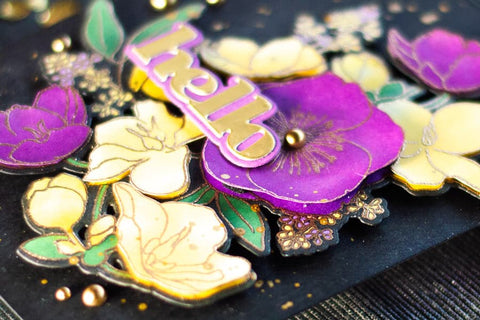
Bold Paper Piecing Hellebore Card with Dramatic Florals
-
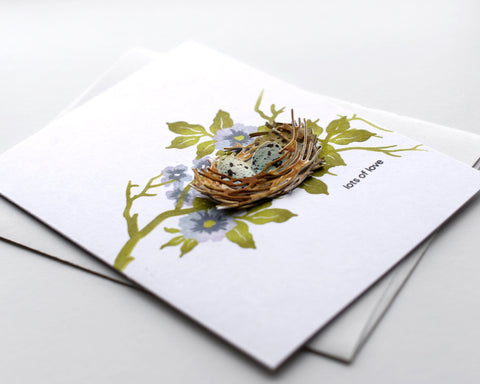
CAS Nature-Inspired Card with Mini Delight Nestled Whimsy Set and Watercolors
-
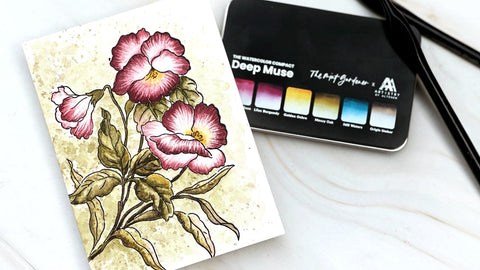
Pansies in Watercolor with the Deep Muse Compact
-
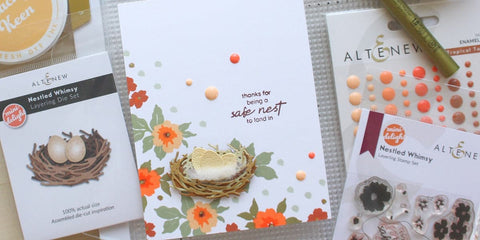
Clean and Simple Cardmaking with the Mini Delight - Nestled Whimsy Set
-
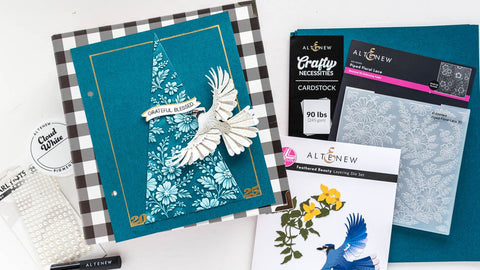
Bring Class and Elegance to Your Projects (+With Video Tutorial)
















Thanks for mentioning to us that most of the best die-cutting machines don’t require platforms anymore, but if you’re using a manual machine, you need to place the platform in the machine first. I’m handcrafting the menu for my new coffee shop, and I need a machine to use for die-cutting. I’ll have to visit a trusted manufacturer that can provide me with a commercial die-cutting machine this weekend. http://mollbrothers.com/
You have nailed it!!! Of course a die cut machine is a MUST!!! I even have a small one when I don’t want to get the big one out. I don’t have a craft room and must put mine away. Thanks for putting micro tweezers on the list. I’d be lost without them!!!
Great info for beginners
Great story. I really thought your new machine was techno enough to print too. But it is beautiful. Good job
Great basics alight I’d add a polky tool, glue and scissors/trimmer as absolute necessities too.